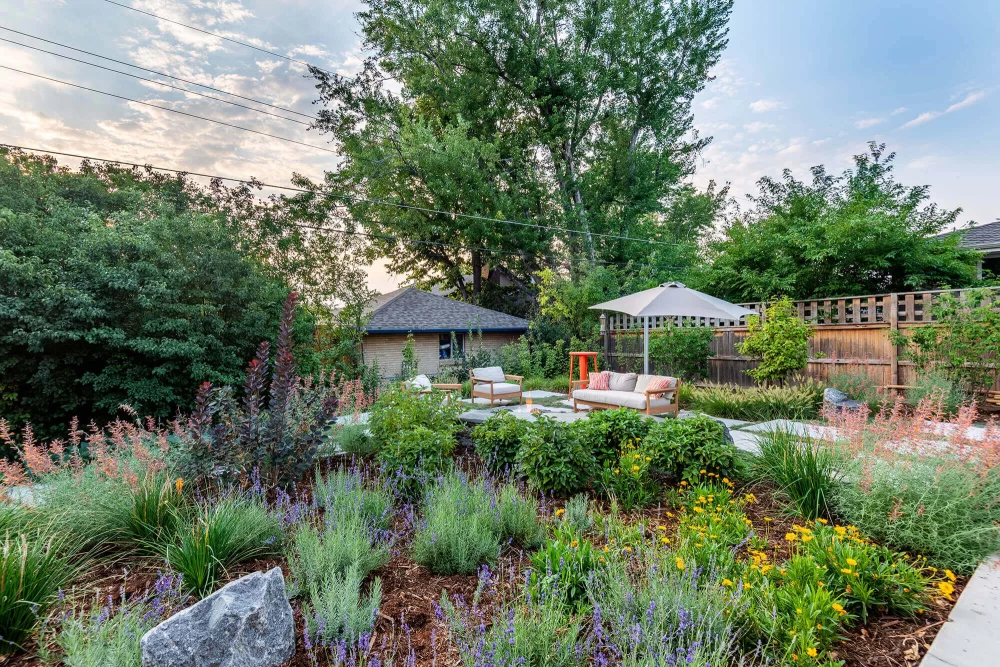
Why Xeriscaping Your Lawn is the Best Choice for Your Home
When I first heard about xeriscaping, I was a little skeptical. The idea of replacing my lush, green lawn with a more drought-tolerant, water-efficient landscape seemed strange. But after spending a summer battling water restrictions, soaring water bills, and constant lawn maintenance, I decided to give xeriscaping a shot. And let me tell you, I haven’t looked back since.
What Exactly is Xeriscaping?
Xeriscaping is a landscaping technique that focuses on creating a beautiful, water-efficient landscape using drought-resistant plants and other sustainable practices. The goal is to reduce the need for supplemental irrigation by choosing plants that thrive in your local climate without requiring excessive water. In short, it’s all about creating a lawn that’s not only beautiful but also eco-friendly and low-maintenance.
1. Major Water Savings
One of the most obvious benefits of xeriscaping is the dramatic reduction in water usage. Watering your lawn can be a significant drain on your household’s resources, particularly in regions where water is scarce or expensive. In fact, lawns often require hundreds or even thousands of gallons of water each week, depending on your location and the season. With xeriscaping, however, the need for regular watering is drastically reduced, which means you can save a lot on your water bills.
2. Lower Maintenance and Time Savings
After transitioning to a xeriscaped lawn, I quickly noticed how much less time I had to spend maintaining my yard. Traditional lawns require frequent mowing, edging, fertilizing, and dealing with weeds. But with xeriscaping, the need for such intensive upkeep is minimal. Drought-tolerant plants, native grasses, and ground covers require little to no fertilization and are much more resistant to pests and diseases. This means I can spend less time working in the yard and more time enjoying it.3. Eco-Friendly and Sustainable
Xeriscaping is not only water-efficient but also eco-friendly. By reducing water usage, you’re helping to conserve precious natural resources. In areas facing drought conditions or water scarcity, every drop saved counts. Additionally, xeriscaping often involves the use of native plants, which are better for local wildlife and ecosystems. These plants provide food and shelter for native birds, insects, and other animals, helping to support a healthy local environment.4. Aesthetic Appeal
A common misconception about xeriscaping is that it results in a dry, barren, and unattractive yard. However, that couldn’t be further from the truth. Xeriscaping can be incredibly beautiful and diverse. With the right selection of plants, you can create a colorful, vibrant yard that thrives without the need for constant irrigation. From desert-inspired gardens with cacti and succulents to lush native grasses and wildflowers, xeriscaping allows you to create a yard that is both stunning and practical.5. Cost Savings
While the initial cost of transitioning to xeriscaping might seem like an investment, the long-term savings are undeniable. By cutting down on your water bills and reducing the amount of maintenance required, you’ll see a significant reduction in the overall cost of lawn care. Plus, xeriscaping can help increase the value of your property, as more and more buyers are looking for homes with eco-friendly and water-efficient landscapes.6. Climate Resilience
One of the main reasons I chose to xeriscape my lawn was the increasing frequency of extreme weather events. Droughts, heatwaves, and water restrictions have become the norm in many parts of the country. Xeriscaping is a great way to prepare for these climate challenges, as drought-tolerant plants are better equipped to survive and thrive in harsh conditions. This resilience not only benefits your lawn but also contributes to the overall health of your community’s ecosystem.My Experience with Xeriscaping
The decision to xeriscape my lawn wasn’t an easy one. At first, I was concerned about what my neighbors might think. But after seeing how much more water-efficient and low-maintenance my yard had become, they started asking me questions about how they could implement it in their own homes. It became a conversation starter, and soon enough, my entire neighborhood began adopting xeriscaping techniques. It’s incredible to see how one decision can spark a movement toward more sustainable and eco-friendly living.How to Get Started with Xeriscaping
If you’re considering xeriscaping your own lawn, it’s important to start by assessing your local climate and selecting plants that are well-suited to your environment. Research native plants and drought-resistant varieties, and consider incorporating mulch, drip irrigation, and rainwater harvesting systems to further conserve water. You don’t need to make a dramatic change all at once – even small steps toward xeriscaping can make a big difference in reducing water usage and maintenance.In conclusion, xeriscaping is a smart, sustainable choice for anyone looking to reduce water usage, lower maintenance costs, and create a beautiful, eco-friendly lawn. Whether you live in a dry climate or simply want to conserve resources, this landscaping technique offers numerous benefits for both your wallet and the environment. So, take the plunge – your lawn (and your water bill) will thank you!








